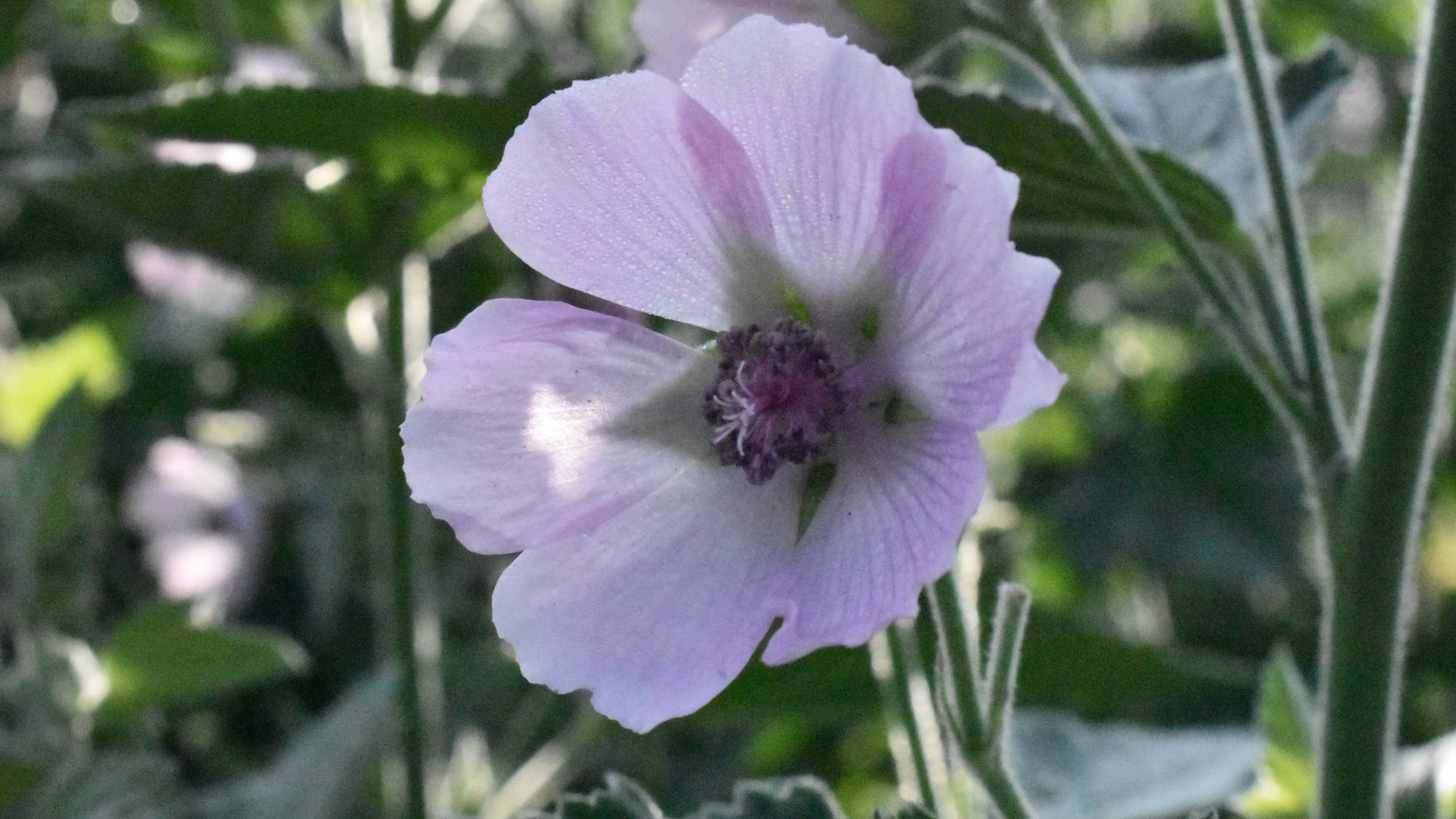The marsh mallow is displaying delicate flowers amongst silvery foliage on the Systematic Beds.
An erect herbaceous perennial, exceeding 2m in height, Althaea officinalis (or marsh mallow) is native to Eurasia, including the United Kingdom. The stems and leaves are covered in fine, silvery hairs and contrast with the saucer-shaped, pale pink flowers that emerge from midsummer to autumn. Although the common name indicates that this is a species preferring moist conditions, it will also grow in well-drained conditions in full sun or partial shade. A member of the mallow family it displays open flowers typical of the family. It is one of twelve species of perennials and annuals in the genus Althaea, which occur in western Europe, Central Asia. This species has been used in traditional herbal medicines for the treatment of a range of conditions including coughs, skin irritations and digestive issues. The flowers and young shoots are edible and can be served in salads, and the roots can be boiled as a vegetable, and also used to make marshmallow sweets. The generic name Althaea comes from the Greek name Althea, which means healing, while the species name officinalis is applied to many plant species which were used as ‘officinal medicines’ by apothecaries.

